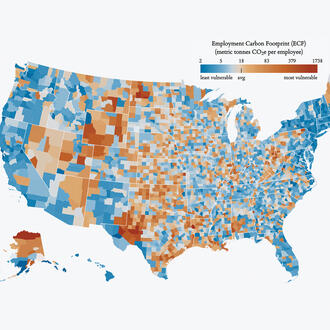Ideas Made to Matter
Labor
Measuring the immigrant workforce
By
All political issues have a moment of attention.
After Sept. 11, terrorism rose to the fore of national consciousness. In the wake of the Sandy Hook Elementary School shooting, conversations turned to gun control, and then to policing after the deaths of Eric Garner and Michael Brown.
Today, immigration is arguably the most prominent flashpoint — whether to build a wall, enact a travel ban, or deport residents in good standing.
MIT Sloan Professor Paul Osterman, who has studied employment patterns and practices for decades, entered the debate last month with an examination of immigrants in the Boston area.
“Our goal was to see the extent to which firms in Boston are dependent on an immigrant workforce,” Osterman said (Two PhD candidates worked with Osterman on the project). He was aware before the project that immigrants make up a considerable portion of the overall workforce, but the numbers still surprised him.
Immigrants constitute 27 percent of all employees aged 25 to 64 in the Boston area. In those industries often associated with immigrants — hospitality, home health — they make up more than half of all employees.
“These sectors are extraordinarily dependent on immigrant workers,” Osterman said.
But a similar dependence exists in other sectors, like hospitals and manufacturing, where immigrants make up 29 percent and 35 percent of employees, respectively.
“The fact is,” Osterman said, “there is a heavy dependence up and down what you call the occupational prestige hierarchy.”
The final report [PDF] characterizes the findings most bluntly: “The Boston region could not succeed economically nor provide goods and services to its citizens without the contribution of the region’s immigrant employees.”
This reliance on immigrant workers is not going away, either. In 2015, 54 percent of all working age people who moved to Boston were immigrants; two-thirds of them came directly from abroad.
“The future growth of the Boston workforce is also dependent on immigrants,” Osterman said.
While higher than national averages, these numbers, which were pulled from the American Community Survey as well as from interviews with local employers, are representative of most major urban centers. Chicago, Osterman said, would post similar percentages; Los Angeles would likely have a slightly larger immigrant workforce.
Regardless of small discrepancies between cities, these findings represent a policy reality that both public and private sectors across the country must confront.
“We need an investment in skills, in employment training systems, in adult basic education,” Osterman said.
Though 40 percent of those surveyed have a college degree, another 40 percent have a high school degree or less. Thirty-eight percent of immigrants report that their English language skills are poor. And the 2014 and 2015 median annual earnings of employed immigrants was roughly $36,000, compared to $51,000 for natives.
“We know what to do” to better integrate this segment of the workforce, Osterman said. “We have best practice models that work. We don’t have to invent something, we just have to give enough resources.”
The basic solution is to provide training programs for immigrants that help them build and maintain solid foundations and it would be beneficial to have intermediary programs that support education and relationships with employers.
“These programs function essentially like a marriage broker,” Osterman said. “And this is a huge unmet need.”
By providing these services, cities across the country could stabilize the substantial contribution of immigrant workers.
The benefits would flow out from there, too, beyond the workplace. Osterman indicated the relatively narrow perspective of his study.
“We did not look at the entrepreneurial contributions of immigrants who found new businesses, or at how they improve cultural richness in a city — something that has real financial implications,” he said. “In that sense, we surely underestimated the economic value of immigration.”



